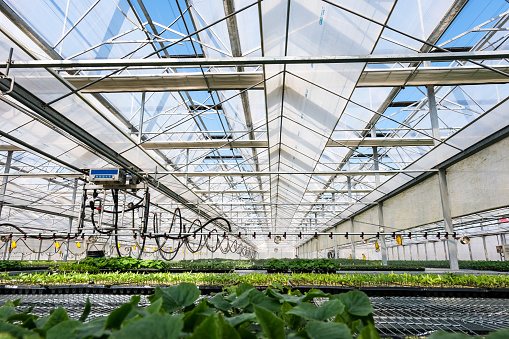Agriculture Overview
Iconic to our beautiful New England landscape, farms have the same needs as many businesses, including the need to efficiently run their operations. The American Council for an Energy Efficient Economy estimates potential energy savings in the agricultural sector at $1 billion per year. With the largest savings in the motor system (especially irrigation pumping), onsite transportation, and lighting energy end-uses. These three can potentially reduce energy costs by 10 percent. Renewable energy systems can also help lower your energy bills, letting you plow savings back into your farm.
Dairy Operations ➞
Dairies are energy-intensive operations, relying on electrical energy for milking (vacuum pumps), cooling and storing milk, heating water and lighting. Opportunities to save energy include energy-efficient lighting, ventilation, milk cooling, water heating and vacuum pump motors (e.g., variable speed drives).
Greenhouse and other Indoor Agriculture ➞
Energy usage in greenhouses is typically 75 percent for heating, 15 percent for electricity and 10 percent for vehicles. Energy-saving solutions can include simple operational changes, upgrades to more efficient lighting and advanced controls, and more efficient heating, cooling and watering systems. Indoor urban farming is also expanding in Connecticut and offers similar efficiency opportunities.
How We Help ➞
Your Connecticut farm can take advantage of a number of energy efficiency and renewable energy programs funded through the Connecticut Energy Efficiency Fund and the Connecticut Green Bank. We always recommend starting with energy-efficiency, to help you right-size your renewable energy system. We offer rebates and financing packages for efficiency improvements such as:
- Natural gas infrared heaters, suitable for many greenhouses
- Heat recovery units and variable frequency drives on milk vacuum pumps
- Energy efficient circulation fans and exhaust fans
- Horticultural LED lighting incentives
- Pipe insulation
How to Get Started ➞
For smaller farms, the best starting point is our full-service energy efficiency program, Small Business Energy Advantage, which provides free audit by a qualified vendor, incentives for up to 65% of the project cost and interest free financing for qualified customers.
Larger farms considering upgrades or expansions can submit a rebate or receive customized incentives through the Energy Opportunities program or Energy Conscious Blueprint program. If you are looking for help to get started, a farm energy audit is an essential management tool in developing an energy plan for your farm. For additional assistance and funding opportunities, please visit the CT Farm Energy Program website.
Financing
-
C-PACE
It’s easier than ever to invest in energy-saving improvements and renewable energy projects. Visit C-PACE.com to get started together.
![]()
-
C&LM Financing Small Business & Municipal Loan Program
Get loans to help your small business or municipality invest in energy-saving improvements
![]()
-
Low-Interest Loans for Commercial & Industrial
Make energy savings pay off with low-interest financing for qualified energy-efficient improvements to your commercial or industrial operations.
![]()










